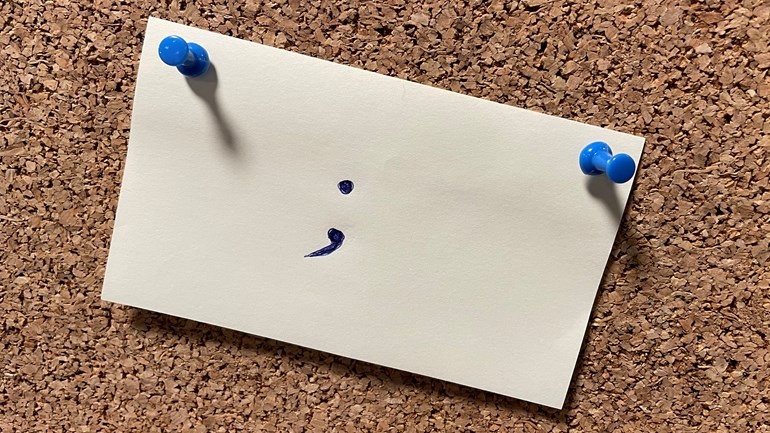The endangered semicolon, and why it should be celebrated

Today – 6 February – is Semicolon Day, but how should it actually be used? Linguist Mikael Berger explains all!
The semicolon is controversial – some find it unwieldy and unnecessary, while others believe it offers opportunities for stylistic variation. Today is Semicolon Day, so we asked Mikael Berger, a senior lecturer and linguist at Malmö University, to give us his lowdown on this both maligned and celebrated punctuation mark.
What are the most common mistakes writers make when using the semicolon?
Many people don't know the difference between colons and semi-colons, so they use them in the same way.
What should you do to get it right?
Simply put, in Sweden, the semicolon can be used in two ways: between sentences and inside enumerations. Between two sentences it can be used to clarify something. The semicolon replaces words such as ‘for’, ‘so’, ‘and’, ‘although’ and ‘without’. The punctuation mark becomes a kind of border, while also linking two sentences. Before a list it is recommended one uses a colon, but if you then want, for example, a different category of items in the list, you can use the semicolon to mark that difference.
Examples of the two uses of the semicolon?
Between sentences:
‘I can't answer emails on 6 February; I'm at a conference in Germany.’
In this example, the two sentence clauses can work alone, but the semicolon links their relationship between them.
Inside enumerations:
‘I have to buy several things for the party: champagne, wine and beer; napkins, mugs and tablecloths.’
In this example, the semicolon divides the two parts of the list; the first half relates to beverages, whereas the latter part lists items of tableware.What does the semicolon mean to you personally? Is it a punctuation mark that you often use?
I use the semicolon, but not as often as I used to. I still think that the semicolon can contribute to a clearer text structure by marking either a close meaning relationship between the sentence before and the sentence after the semicolon, or a clearly separated meaning relationship between words before and words after the semicolon in enumerations.
What do you think about the future of the semicolon?
The semicolon's distinguishing features have faded. Today, the semicolon is used as a slightly more elegant, and more eye-catching, colon.
My prediction for the future is that the semicolon will, unfortunately, only be used as a kind of decoration that attracts readers' attention.

